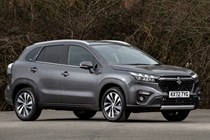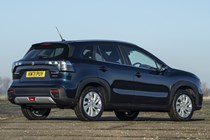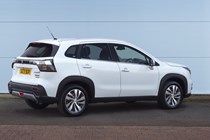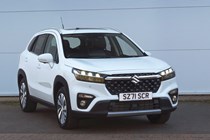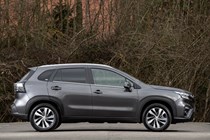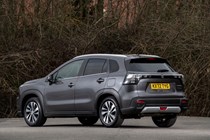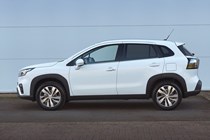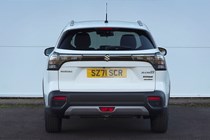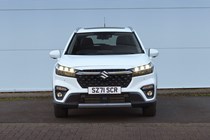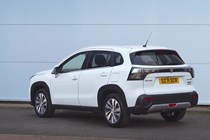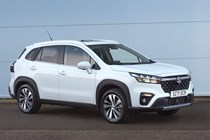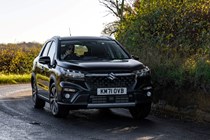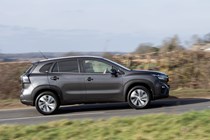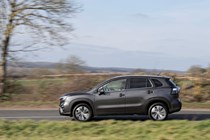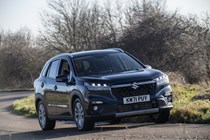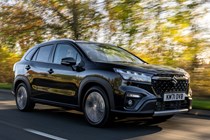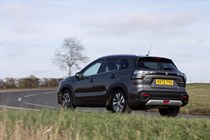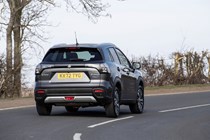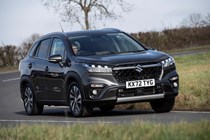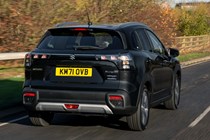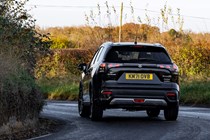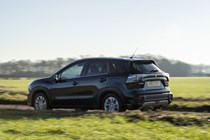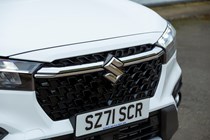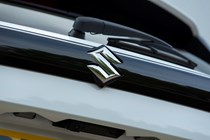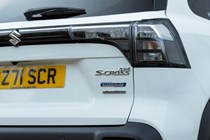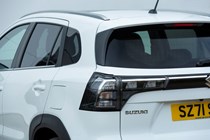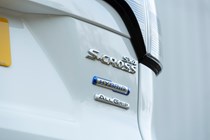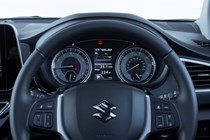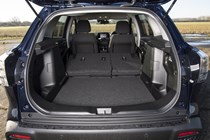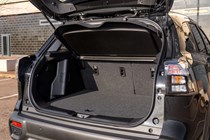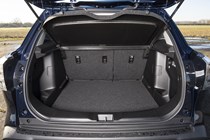
Suzuki S-Cross interior, tech and comfort
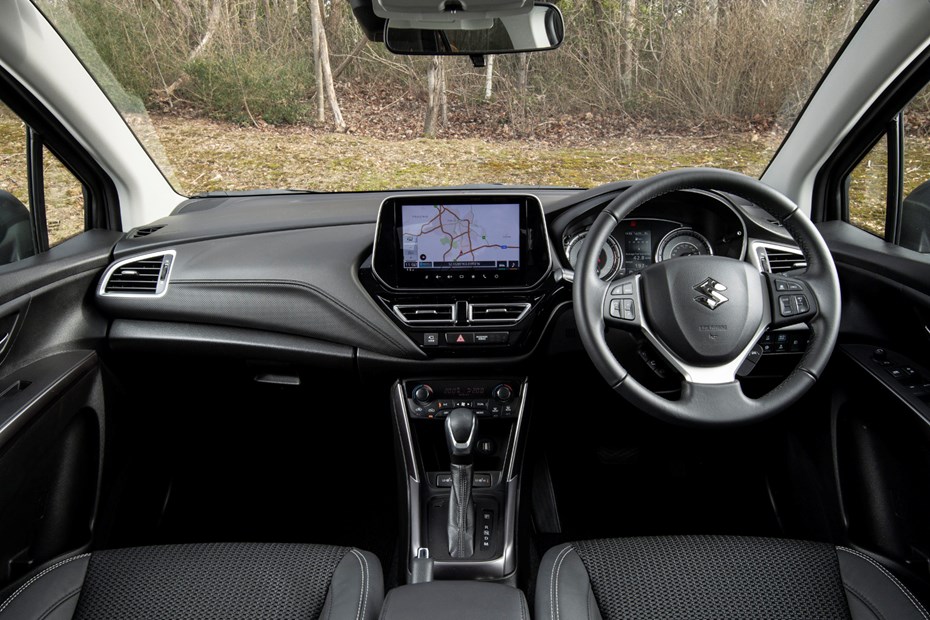
- Logical layout
- Easy-to-use
- Monotone
How is the quality and layout?
We’ll start with quality. The cabin trims are scratchy and cheap, but they’ve been nailed together well. Nothing moves and nothing squeaks. It feels like it’s built to last – and cheap plastics aren’t such a bad thing because they’re easy to clean. You can muck the cabin out with a damp rag and one of our best all-purpose cleaners. It’s easy.
The layout has retained some fantastically old-school features. For example, Suzuki is one of the few manufacturers still forging ahead with a manual handbrake rather than an electric one. The gauges are analogue rather than digital and the climate controls are operated by switches and knobs rather than a menu on the infotainment system. It’s very easy to learn.
There are some oddities, though. Our test cars have all been top-spec Ultra models, but there are still some nasty blanking plates on the steering wheel.
Infotainment and tech
Entry-level cars get a 7.0-inch touchscreen, while top-spec Ultra models get a 9.0-inch display. The former looks like an aftermarket unit and operates in much the same way. It’s cheap and slow.
The 9.0-inch system is sharper, but it still reacts slowly to your inputs. Its built-in sat-nav system feels ancient, too – it can’t even figure out for itself what country you’re in, and continued to grate during our long-term testing. Thankfully, every model comes as standard with Apple CarPlay and Android Auto which instantly remedies these problems.
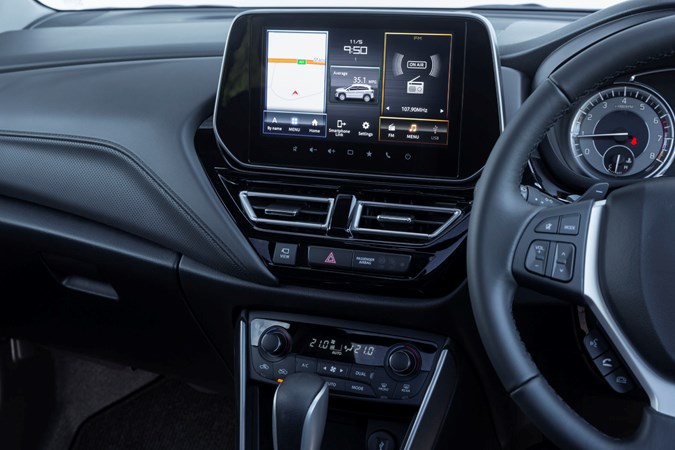
In October 2022, Suzuki also launched a connected smartphone app for the S-Cross called (rather unsurprisingly) Suzuki Connect. It allows drivers to track the location of their car, lock its doors and log its driving history. If you already have an S-Cross, you also can have the technology retrofitted to your car free of charge.
Comfort
- Supportive seats
- Easy to get comfortable
- Noisy cabin
The S-Cross’s seats lack electric adjustment and a lumbar support setting, but they have enough adjustment to allow most drivers to get comfortable. The steering column doesn’t have a great deal of reach adjustment, but you can work around that by setting the seat further forward. The lack of lumbar support can be a problem over longer trips, however, and was a grievance during our long-term test with the S-Cross.
Head and legroom is good in the rear, but the middle seat is quite narrow. Three abreast is manageable providing the journey is short. We like the leather trim on the flagship car, too. It feels both soft and hard-wearing.
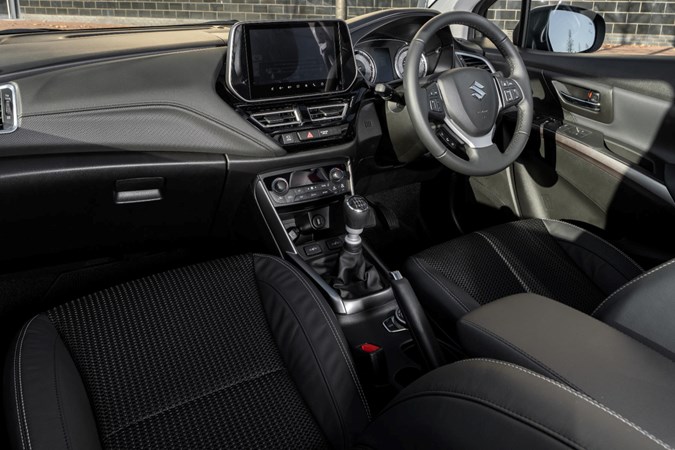
The biggest problem with the S-Cross’s cabin is the noise. There’s a lot of wind noise whipping around the roof bars and the door seals – and because the car is so light, you get quite a bit of road noise pushing up through the suspension and into the cabin.


